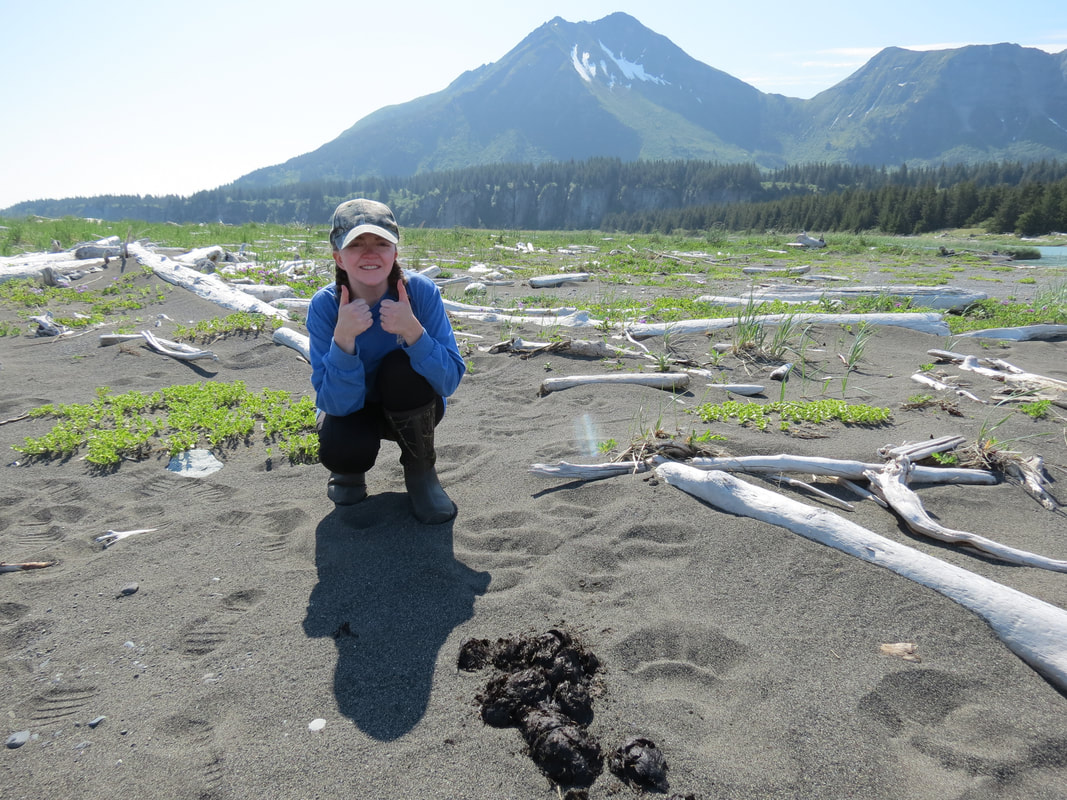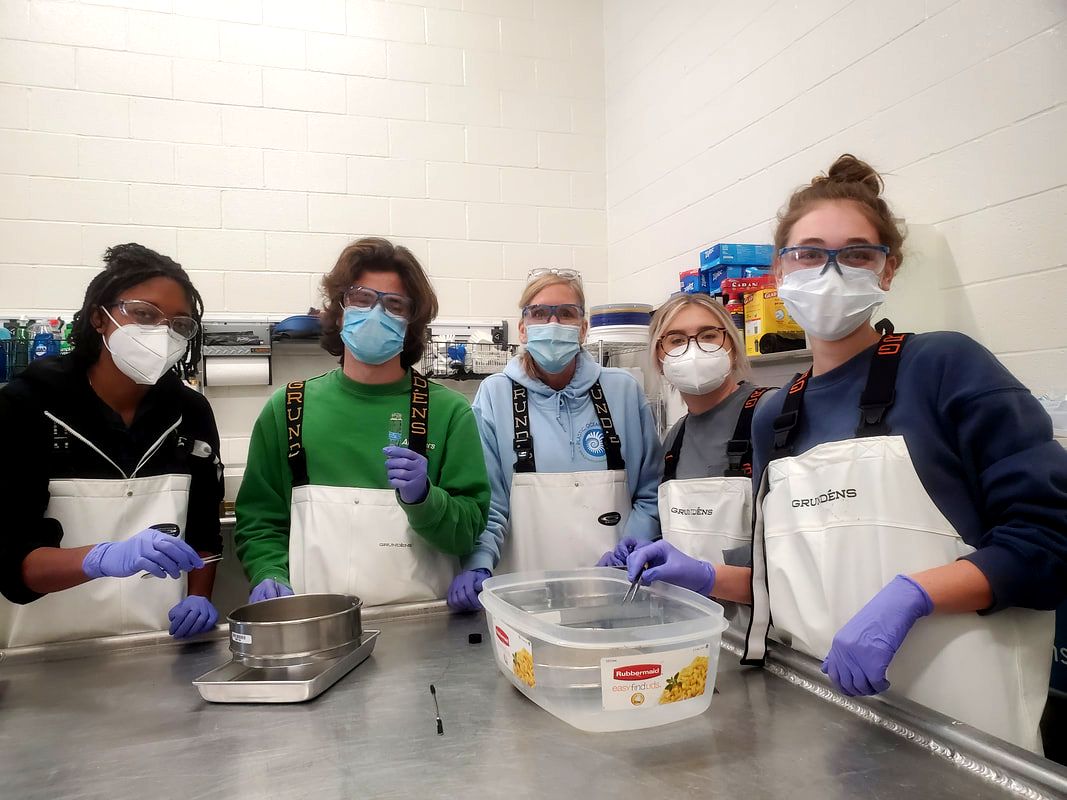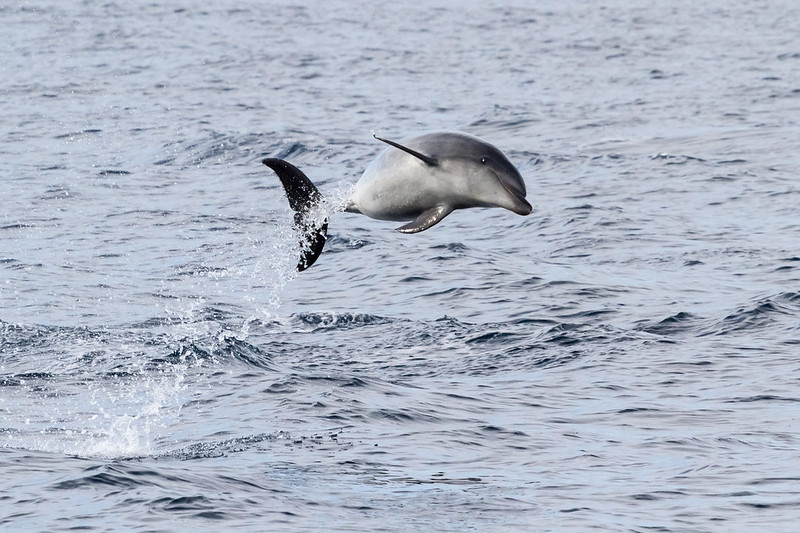|
Assessing Plastic Ingestion in Alaskan Brown Bears (Ursus arctos horribilis)
In June 2021 our co-founder/executive director, Bonnie Monteleone, flew to Alaska and worked with the co-founders of Ocean Plastics Recovery Project (OPR), Andy Schroeder and Scott Farling, to remove marine debris in Katmai National Park and Preserve. While there, she asked Andy if he had ever noticed a local grizzly bear interact with the debris. He mentioned observing a bear chewing on a plastic, garbage can lid. This led to the question, are terrestrial animals ingesting marine plastics that wash up on the shores? With this question in mind, Bonnie scientifically collected two grizzly bear scat samples from the park and flew them back to our office packed amongst her clothing. The dedication! Here at the Plastic Ocean Project lab, we chemically digested the organics from one of the bear scat samples and picked through it for suspicious particles. Those particles were analyzed under the FTIR/ATR instrument to determine if they are indeed plastic. The answer to the aforementioned question is YES. We have one more grizzly bear scat sample to analyze to complete our preliminary data which we will use to apply for funding. The funding will be used to continue the research project, as we collected 12 more scat samples on our 2022 Alaska Trip! Click HERE to view OPR’s website for more information on our collaborators! Click HERE to read the WECT 6 news coverage! |
|
Evaluating Microplastic Ingestion in Stranded Bottlenose Dolphins (Tursiops truncatus)
Plastic Ocean Project is working in collaboration with the NC Marine Mammal Stranding Network to determine whether the stomachs of stranded bottlenose dolphins contain microplastics and what pathways they take to get there. Stranded dolphins are those that have washed ashore and unfortunately do not survive. Necropsies, similar to human autopsies, are completed in order to determine possible causes for the stranding. During these necropsies, the digestive tracts are removed and frozen until time for processing. Did you know dolphins have THREE stomachs? Through UNCW’s Oriole Burevitch Laboratory, we process the stomachs and pick out the suspicious particles. We later analyze those particles at the POP lab with our FTIR-ATR which tells us what type of plastic the particle is made of. Sometimes, the stomachs contain partially digested fishes which are saved for further microplastic investigation. If we find any, this could indicate that microplastics are ingested via trophic transfer, eating prey that contain microplastics. This will be an important find in determining if and how plastics move up the food chain. We have currently identified all of the particles from all stomachs of one dolphin. With the help of our students we will continue to work through more specimens. Click HERE to learn more about the NC Marine Mammal Stranding Network and what they do! |
|
North American River Otters (Lontra canadensis): is plastic a new part of their diet?
Jack Spruill, a sponsor and friend of Plastic Ocean Project, listened to our executive director, Bonnie Monteleone, talk about our Katmai grizzly bear, plastic ingestion research. During this conversation he thought, what about North American River Otters? Living near the banks of Topsail Creek with access to a dock, Jack has the good fortune of observing local otters. They even leave him presents! He offered to send us their scat for our lab to conduct a similar study to the Katmai grizzly bears. During 2021, Jack sent us two samples of North American River Otter scat. By the end of spring 2022, we had processed and analyzed both scat samples, under the FTIR/ATR instrument, determining that plastics had been ingested. This confirmation gives us the grounds to conduct further research into the Topsail Creek area and its local otter populations. We are currently in the process of looking for funding to answer further questions regarding mammal ingestion of plastics. |
© Plastic Ocean Project. All rights reserved.








